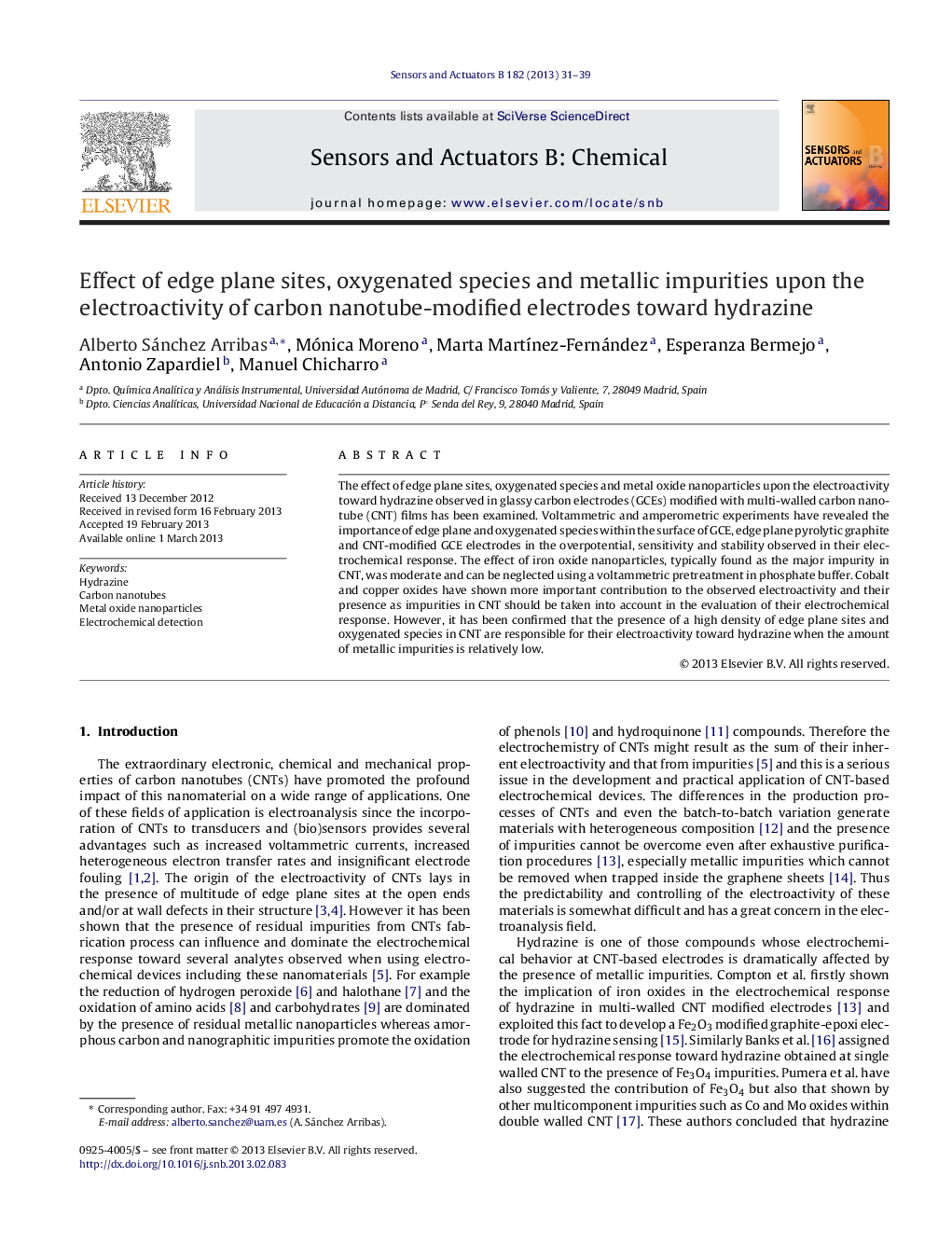| Article ID | Journal | Published Year | Pages | File Type |
|---|---|---|---|---|
| 740398 | Sensors and Actuators B: Chemical | 2013 | 9 Pages |
The effect of edge plane sites, oxygenated species and metal oxide nanoparticles upon the electroactivity toward hydrazine observed in glassy carbon electrodes (GCEs) modified with multi-walled carbon nanotube (CNT) films has been examined. Voltammetric and amperometric experiments have revealed the importance of edge plane and oxygenated species within the surface of GCE, edge plane pyrolytic graphite and CNT-modified GCE electrodes in the overpotential, sensitivity and stability observed in their electrochemical response. The effect of iron oxide nanoparticles, typically found as the major impurity in CNT, was moderate and can be neglected using a voltammetric pretreatment in phosphate buffer. Cobalt and copper oxides have shown more important contribution to the observed electroactivity and their presence as impurities in CNT should be taken into account in the evaluation of their electrochemical response. However, it has been confirmed that the presence of a high density of edge plane sites and oxygenated species in CNT are responsible for their electroactivity toward hydrazine when the amount of metallic impurities is relatively low.
